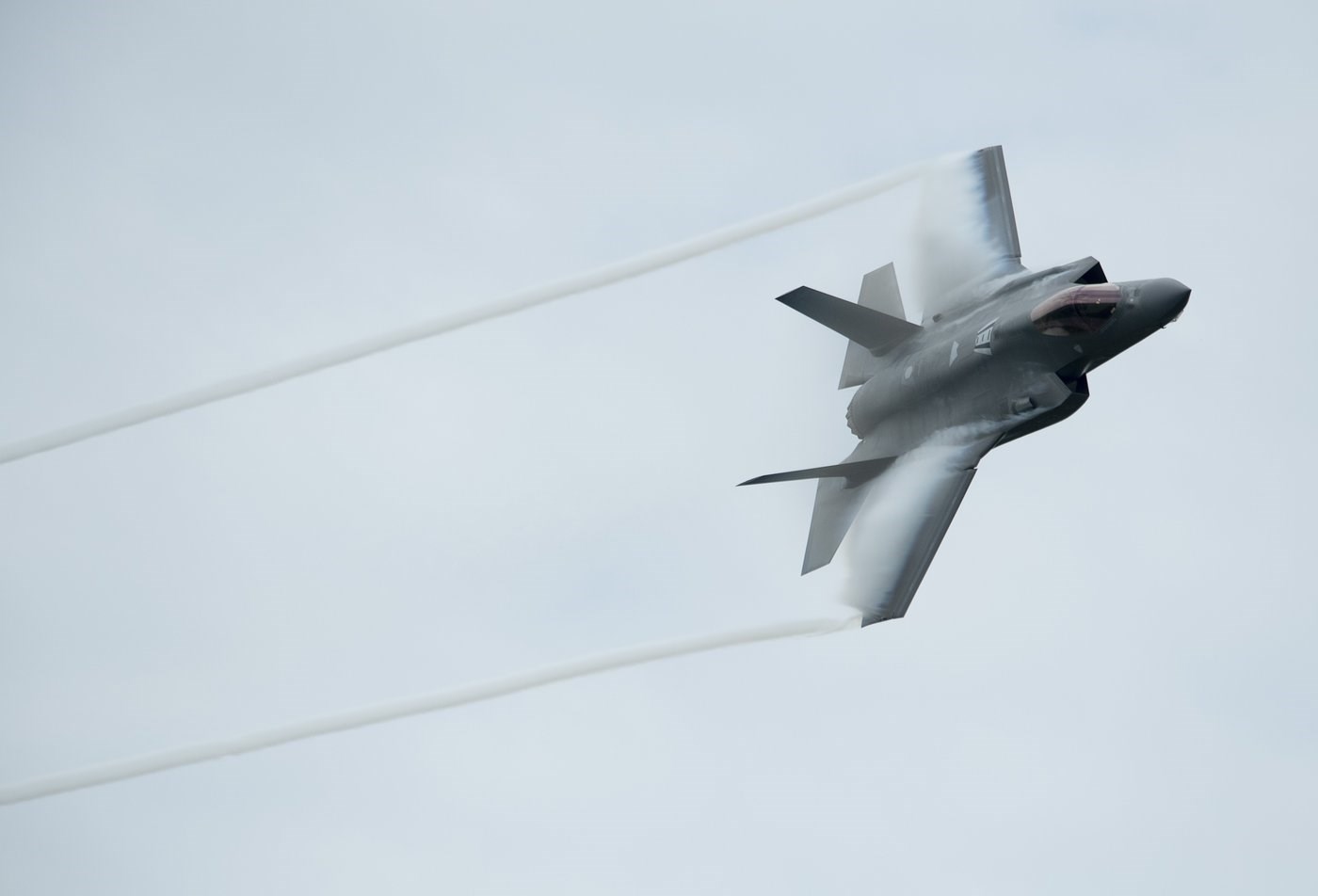
An F-35A Lightning II fighter jet practises for an air show appearance in Ottawa, Friday, Sept. 6, 2019. THE CANADIAN PRESS/Adrian Wyld
July 12, 2025 - 3:00 AM
OTTAWA — The Department of National Defence is looking at the possibility of complementing its incoming F-35 fleet with uncrewed combat aircraft.
Unclassified documents obtained by The Canadian Press show the department is researching various options for acquiring the emerging technology.
The documents suggest that purchasing a fleet of aerial combat drones that could fly alongside fighter jets could cost as much as $16 billion and would require hundreds of staff.
That cost estimate is in the upper range. The price tag and other aspects of the emerging technology remain uncertain, and the fact that the government is researching combat drones doesn't guarantee that Canada will buy any.
David Perry, president of the Canadian Global Affairs Institute, said Canada's allies are already headed in this direction, so at a minimum Ottawa will want to better understand how its closest military partners will use similar technology.
He said combat drones could give the air force more flexibility to contribute to allied operations and could act as a force-multiplier that would beef up the "mass" of the air force.
They're also cheaper than fighter jets.
"There's been a trade-off, particularly in the West, with investing in expensive things. It can have super high levels of precision and survivability ... and we've been moving towards having increasingly expensive fighter aircraft that can do phenomenal things, but they're so expensive that you can't build all that many of them," Perry said.
"The broad thrust of the idea of having an unpiloted vehicle that would be able to operate with a piloted vehicle is that you provide additional numbers in a way that could potentially help provide enough quantity to overwhelm opposition forces."
Perry pointed to the war in Ukraine, where Russia has been launching massive volleys of drones and missiles.
"If you have a whole bunch of targets to track, it makes it much more difficult for any kind of defensive system to be able to deal, at the same time, with all the incoming," he said.
Canada and its allies have never deployed unmanned aerial combat drones that operate in tandem with fighter jets.
Daniel Norton is a senior management systems analyst with the RAND Corporation who has done modernization studies for the U.S. air force for more than three decades. He said drones of the type Canada is looking at tend to be smaller than crewed fighters, cost a fraction of a conventional jet if bought in bulk — and can be used in situations where the military wouldn't want to put a pilot at risk.
Known as "collaborative combat aircraft," the vehicles are designed to act autonomously in some ways — such as targeting and flying — but with humans managing their actions. Future versions of the technology could engage in fully autonomous operations.
The drones could be used to carry sensors, jammers or weapons to support normal fighter jets. They could even be used as decoys.
Norton said new platforms like these probably won't be deployed in battle by any country before 2030 at the earliest.
"I'd be surprised if it happened sooner," he said.
National Defence vaguely alluded to such platforms in the most recent defence policy update as something the government would "explore."
The 2024 policy update, titled “Our North, Strong and Free,” committed to exploring “options for acquiring a suite of surveillance and strike drones and counter-drone capabilities.”
An internal preliminary analysis of the various options for the “autonomous collaborative platform” ruled out buying completely Canadian-made fighter drones.
The analysis said one possible path would have Canada work with partner nations on developing new systems like this, and pointed to several such craft being developed for Australia, the U.S. and European nations.
The analysis said such a procurement project "could provide Canadian aerospace firms with an entry point into development and production of advanced weapons systems.”
There are no current off-the-shelf versions but several are being developed, such as Boeing’s MQ-28A "Ghost Bat" for Australia, General Atomics’ YFQ-42 in the U.S. and the Anduril YFQ-44A.
Boeing's aircraft is undergoing flight testing, while Anduril's is expected to start testing this year.
Both the U.S. and Australian air forces use F-35s. There are also several initiatives underway in Europe for autonomous collaborative aircraft.
When The Canadian Press asked Lt.-Gen. Jamie Speiser-Blanchet, the new commander of the Royal Canadian Air Force, how the RCAF might change in response to the rapid developments in drone warfare, she said the military is “already looking at those kinds of future capabilities.”
“It is absolutely something that is on our radar and something that we need to be prepared for in the future," she said.
In March, in response to the trade war with the U.S., Prime Minister Carney ordered a review of Canada’s plan to purchase a fleet of F-35 fighter jets.
The federal government is expected to render a decision on the procurement project by the end of summer.
Canada's planned purchase of 88 of the U.S.-made stealth jets is expected to cost $27.7 billion, according to the auditor general. At this point, Canada has only financially committed to purchasing the first 16 jets.
This report by The Canadian Press was first published July 12, 2025.
News from © The Canadian Press, 2025